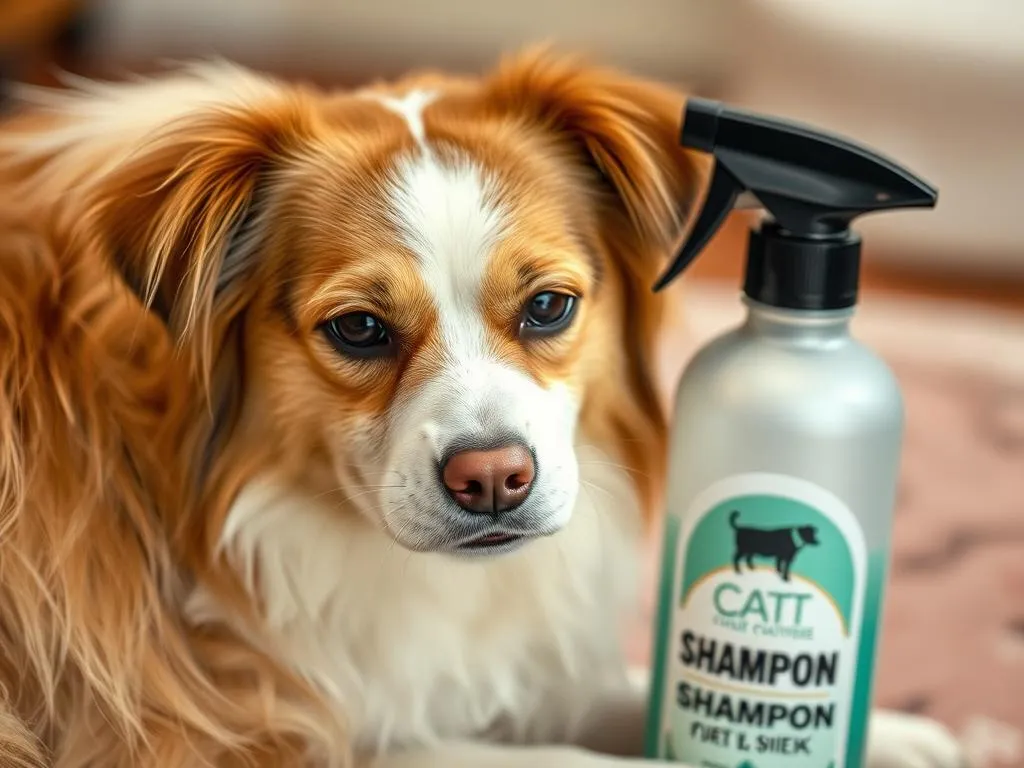
Maintaining proper dog health care is essential for your furry friend’s well-being. Grooming and hygiene play a crucial role in ensuring your dog remains healthy and happy. One question that often arises among pet owners is: can you use cat shampoo on dog? It’s important to understand the differences between dog and cat grooming products to ensure your pet’s skin and coat health.
Understanding Dog Skin and Coat Health
Anatomy of Dog Skin
To appreciate the significance of maintaining a dog’s coat and skin, it’s helpful to understand its anatomy. Dog skin consists of three primary layers: the epidermis, dermis, and subcutis. The epidermis serves as the outer barrier, protecting against environmental factors, while the dermis contains blood vessels, hair follicles, and nerve endings. The subcutis layer provides insulation and cushioning. Healthy skin is vital for overall health, as it acts as a barrier against infections and regulates temperature.
Common Skin Issues in Dogs
Various skin problems can affect dogs, including:
- Dry Skin: Often caused by environmental factors, allergies, or improper grooming, dry skin can lead to discomfort and irritation.
- Allergies: Dogs can suffer from food allergies, environmental allergies, or flea allergies, all of which can manifest as skin issues.
- Parasites: Fleas, ticks, and mites can cause significant irritation and lead to serious skin problems if left untreated.
Understanding these issues highlights the importance of regular grooming and the right products for your dog’s specific needs.
Importance of Regular Grooming
Regular grooming is not just about keeping your dog looking good; it has several health benefits:
- Removes Loose Fur and Debris: Regular brushing helps remove dirt, debris, and dead hair, promoting a healthy coat.
- Stimulates Skin and Coat Health: Grooming can stimulate the production of natural oils, enhancing coat shine and softness.
- Identifies Skin Issues Early: Regular grooming sessions allow you to spot any changes in your dog’s skin or coat, enabling early intervention.
The frequency of grooming depends on the dog’s breed, coat type, and activity level. Long-haired breeds may require more frequent grooming compared to short-haired breeds.
The Role of Shampoo in Dog Grooming
Types of Dog Shampoos
When it comes to dog grooming, using the right shampoo is crucial. Here are some common types:
- Medicated Shampoos: Designed to treat specific skin conditions such as allergies or infections.
- Hypoallergenic Shampoos: Formulated for dogs with sensitive skin or allergies.
- Moisturizing Shampoos: Help hydrate dry skin and maintain coat health.
Ingredients commonly found in dog shampoos include oatmeal, aloe vera, and natural oils, which are beneficial for skin health.
Why Human and Cat Shampoos Are Not Suitable
Using human or cat shampoos on dogs is not advisable for several reasons:
- pH Level Differences: Dog skin has a different pH level than human or cat skin. Dog skin is more alkaline, while cat skin is more acidic. Using the wrong product can disrupt the skin barrier, leading to irritation or infections.
- Potential Risks: Cat shampoos may contain ingredients that are harmful to dogs. Dogs can have allergic reactions or skin irritations from products not formulated for them.
Can You Use Cat Shampoo on Dog?
Understanding Cat Shampoo Formulations
Cat shampoos are specifically formulated to meet the unique needs of feline skin and coat. They may contain ingredients aimed at removing cat-specific odors or addressing skin issues common in cats. Ingredients such as essential oils and fragrances can be more concentrated in cat shampoos, which may not be suitable or safe for dogs.
Risks of Using Cat Shampoo on Dogs
Using cat shampoo on dogs poses several risks, including:
- Allergic Reactions: Dogs may develop allergic reactions to ingredients that are harmless to cats.
- Skin Irritation: The pH imbalance and ingredients in cat shampoo can lead to irritation, redness, and discomfort.
- Long-term Effects: Regular use of inappropriate shampoos can lead to chronic skin issues, including infections and loss of coat quality.
When Cat Shampoo Might Be Appropriate
There may be rare instances where cat shampoo could be considered for dogs, such as in an emergency when no other options are available. However, it’s essential to consult with a veterinarian first to ensure it’s a safe choice for your dog’s specific situation.
What to Look for in a Dog Shampoo
Ingredients to Prefer
When selecting a dog shampoo, look for products that contain beneficial ingredients, such as:
- Natural and Organic Ingredients: These are gentler on the skin and often provide better hydration.
- Essential Oils: Ingredients like lavender or tea tree oil can promote skin health and have natural antiseptic properties.
Ingredients to Avoid
Certain ingredients should be avoided as they can harm your dog’s skin:
- Harsh Chemicals: Sulfates, parabens, and artificial colors can irritate and dry out the skin.
- Fragrances and Dyes: These can cause allergic reactions and are best avoided in dog grooming products.
Recommendations for Dog Shampoos
Here’s a list of reputable dog shampoo brands that cater to different needs:
- Earthbath: Offers natural and organic shampoos great for sensitive skin.
- Vet’s Best: Provides medicated shampoos formulated for various skin issues.
- Burt’s Bees: Known for gentle, natural products without harsh chemicals.
Best Practices for Dog Bathing
How Often to Bathe Your Dog
Bathing frequency varies based on several factors, including:
- Breed: Long-haired dogs may need more frequent baths compared to short-haired breeds.
- Activity Level: Active dogs that enjoy outdoor play may require more regular bathing.
- Health Conditions: Dogs with skin conditions may need more frequent baths with medicated shampoos.
Signs that indicate a need for bathing include a noticeable odor, visible dirt, or excessive shedding.
Step-by-Step Bathing Guide
- Prepare the Area: Choose a comfortable bathing area, such as a bathtub or outdoor space, and gather all necessary supplies (shampoo, towels, brushes).
- Wet the Coat: Use lukewarm water to wet your dog’s coat thoroughly, avoiding the head initially.
- Apply Shampoo: Use a pet-friendly shampoo and gently massage it into your dog’s coat, starting from the neck down.
- Rinse Thoroughly: Ensure all shampoo is rinsed out to prevent skin irritation.
- Dry Your Dog: Use a towel to pat your dog dry and, if your dog tolerates it, a pet-friendly blow dryer on a low setting.
Post-Bath Care
After bathing, it’s important to brush your dog’s coat to remove tangles and distribute natural oils. Monitor for any adverse reactions, such as redness or itching, and consult your veterinarian if necessary.
When to Consult a Veterinarian
Signs of Skin Problems
Regular check-ups are crucial for your dog’s health. Signs that indicate a need for professional help include:
- Persistent Scratching or Biting: Indicates potential skin irritation or allergies.
- Redness or Inflammation: May suggest an underlying skin condition.
- Unusual Odors: Can signal infections or other health issues.
Recommended Veterinary Products
Veterinarians may recommend specific medicated shampoos or treatments tailored to your dog’s needs. These products are designed to address various skin conditions effectively and safely.
Conclusion
In summary, understanding the differences between dog and cat grooming products is essential for maintaining your dog’s skin and coat health. The answer to the question, can you use cat shampoo on dog, is a definitive no; the risks outweigh any potential benefits. Always prioritize using appropriate grooming products that are specially formulated for dogs. Regular grooming, combined with the right products, will help ensure your furry friend remains healthy and happy.
Taking proactive steps in dog health care not only improves their quality of life but also strengthens the bond you share with your four-legged companion. If you ever have concerns about your dog’s grooming or health, don’t hesitate to consult your veterinarian for guidance and recommendations.









